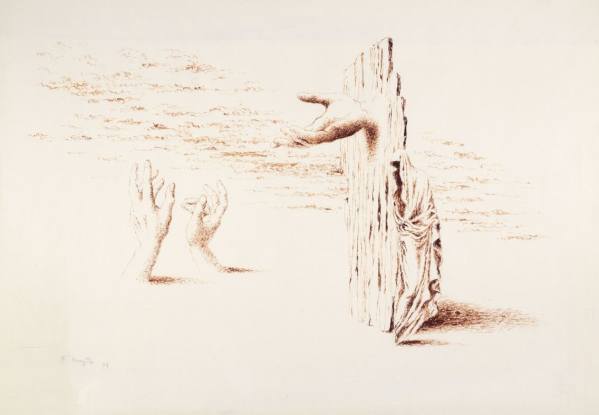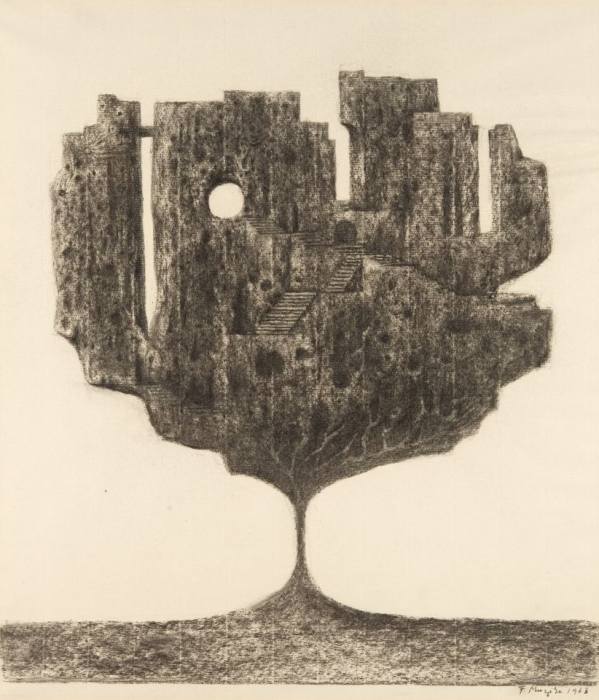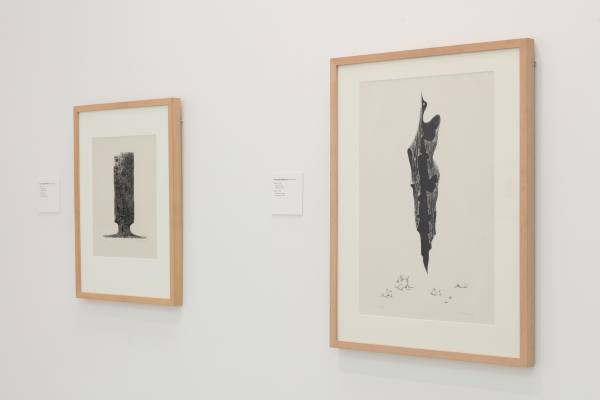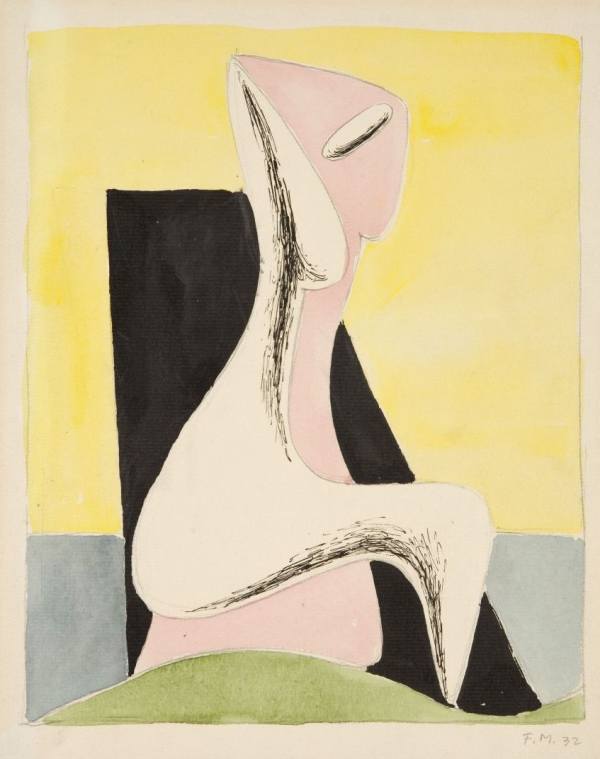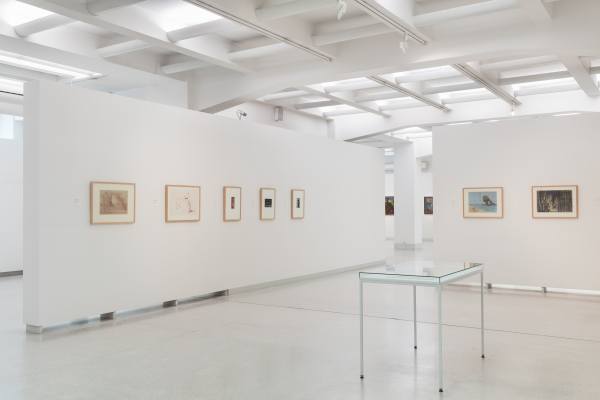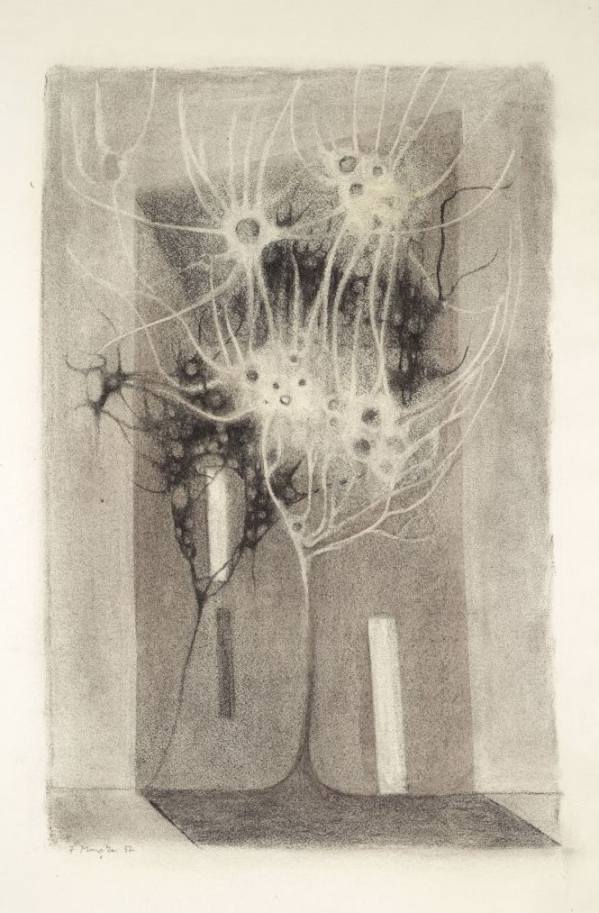The exhibition presents František Muzika (1900–1974) and his imaginatively conceived drawing and prints from the National Gallery Prague’s collection. All of them serve as a stage for lyrical metamorphoses filled with enigmatic references. The exhibition has been organised to mark the 120th anniversary of the artist’s birth.
The start of the artist’s imaginative period, during which archetypal concepts and dreams moved to the forefront, dates to the early 1930s, although the last echoes of his lyrical post-Cubist stylisation of shapes were still resounding in his figural themes. Muzika did not create according to nature, instead he reflected the imaginative landscape that existed in his mind. He used a traditional artistic form to romanticise his visions. In his drawings and prints, we encounter the basic symbolic language of Muzika’s characteristic motifs, which, over the years, underwent countless transformations in his work: the ruins of walls, anthropomorphised cliffs, female torsos, draperies, seashells. They are situated in an imaginary De Chiricoesque space that adds a dreamlike quality to the depicted scenes. Muzika reflected the tragedy of the time in his motifs of Battles (1937), Wounded (1937), and Women by a Grave (1939). During World War II, the artist created phantoms and unrealistically dreamlike scenes (The Great Dream, 1942), all permeated with contemporary sadness and melancholy. The displayed artworks also include some quick pencil sketches capturing the artist’s initial inspirational impulses, some of which were later elaborated in painted form (Requiem, The Birth of Venus).
Curator: Adriana Šmejkalová
Graphic cabinet, 2nd floor
